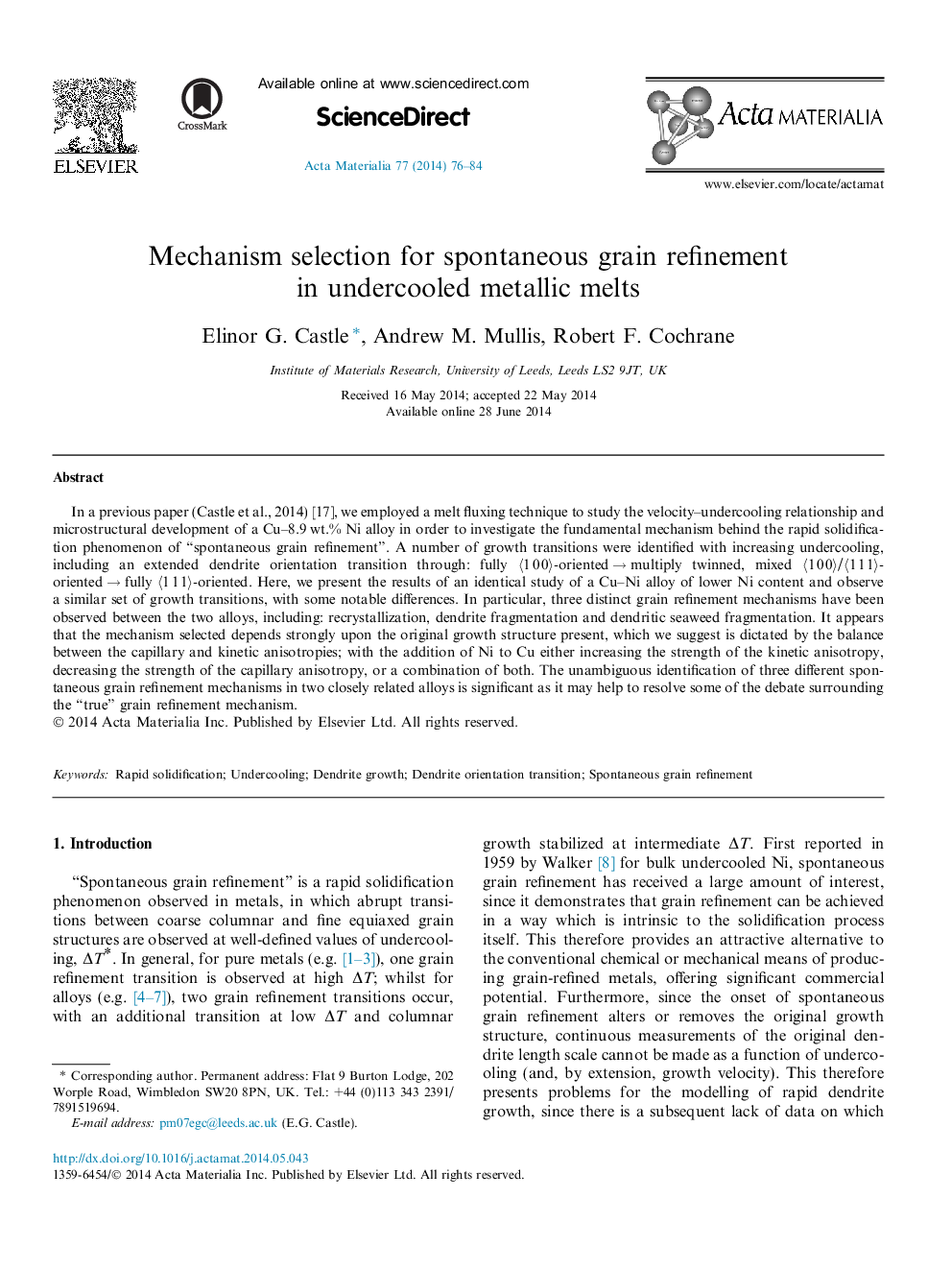| Article ID | Journal | Published Year | Pages | File Type |
|---|---|---|---|---|
| 7881393 | Acta Materialia | 2014 | 9 Pages |
Abstract
In a previous paper (Castle et al., 2014) [17], we employed a melt fluxing technique to study the velocity-undercooling relationship and microstructural development of a Cu-8.9 wt.% Ni alloy in order to investigate the fundamental mechanism behind the rapid solidification phenomenon of “spontaneous grain refinement”. A number of growth transitions were identified with increasing undercooling, including an extended dendrite orientation transition through: fully ã1 0 0ã-oriented â multiply twinned, mixed ã1 0 0ã/ã1 1 1ã-oriented â fully ã1 1 1ã-oriented. Here, we present the results of an identical study of a Cu-Ni alloy of lower Ni content and observe a similar set of growth transitions, with some notable differences. In particular, three distinct grain refinement mechanisms have been observed between the two alloys, including: recrystallization, dendrite fragmentation and dendritic seaweed fragmentation. It appears that the mechanism selected depends strongly upon the original growth structure present, which we suggest is dictated by the balance between the capillary and kinetic anisotropies; with the addition of Ni to Cu either increasing the strength of the kinetic anisotropy, decreasing the strength of the capillary anisotropy, or a combination of both. The unambiguous identification of three different spontaneous grain refinement mechanisms in two closely related alloys is significant as it may help to resolve some of the debate surrounding the “true” grain refinement mechanism.
Related Topics
Physical Sciences and Engineering
Materials Science
Ceramics and Composites
Authors
Elinor G. Castle, Andrew M. Mullis, Robert F. Cochrane,
